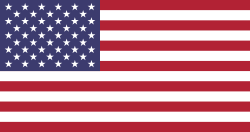Introduction:
Efficient and precise trench excavation and pipe laying are crucial for successful construction projects. In this article, we will explore the essential guidelines and procedures for trench excavation, pipe laying, and lamination. From ensuring proper trench dimensions to implementing effective lamination techniques, following these best practices will help maintain quality, safety, and efficiency in the construction process. Let's delve into the step-by-step procedures for trench excavation, pipe laying, and the importance of lamination in joining pipes.
Trench Excavation: Ensuring Stability and Clearance
To accommodate pipe installations, it is essential to consider soil conditions and trench dimensions. In unstable soil conditions, the trench width should be extended to at least half the diameter of the pipe on each side. In multiple pipe trenches, a minimum clearance of 600 mm must be maintained between each pipe, ensuring workable space and meeting customer requirements. These precautions help ensure stability and facilitate efficient pipe laying.Pipe Laying Procedure: Precision and Safety
The process of pipe laying requires precision and adherence to safety measures. The following steps outline the typical pipe laying procedure:
a. Position the crane near the trench, maintaining a safe distance.
b. Unload the pipe and carefully lower it into the trench.
c. Prior to pipe laying, ensure that the bedding is mechanically compacted according to the required specifications.
d. After placing the first pipe, bring the second pipe adjacent to the previously placed one.
- Hunching the Pipe: Importance of Backfilling
Hunching, or backfilling, is a critical step in the initial stages of pipe installation. The following guidelines should be followed:
a. Haunch the bottom of the pipe using backfilling material, as shown in provided photos and figures.
b. Repeat the same procedure for the remaining pipes.
c. Create lamination joints for each pipe, following the provided lamination process.
- Lamination of Butt and Strap Joints: Ensuring Strong Connections
The lamination procedure is essential for joining pipes using butt and strap joints. The following considerations should be kept in mind:
a. Adhere to the specifications provided for joining pipes, as outlined in the design submittal.
b. Create a lamination pit for each butt and strap joint, with a minimum workable space under the pipe.
c. The lamination pit should be located approximately 500 mm away from the lamination edge along the pipe joint on either side, and 500 mm away from the pipe's outer diameter. It should have a depth of 750 mm to 1000 mm.
d. Fill the lamination pits in layers using selected backfill material, and compact them using blunt tools made of wood or suitable materials. Avoid using steel tools for compaction.
- Above-Ground Installation of GRP Pipe: Following Guidelines
For GRP (Glass Reinforced Plastic) pipes installed above ground, specific guidelines must be followed:
a. Handle the GRP pipes as discussed and install them according to the provided guidelines.
b. Ensure that the supporting system aligns with the support locations and types specified in the issued construction drawings, which are based on stress analysis reports.
Conclusion:
By adhering to best practices in trench excavation, pipe laying, and lamination, construction projects can maintain quality, safety, and efficiency. Following guidelines for trench dimensions, precise pipe laying procedures, proper hunching techniques, and lamination processes ensures the integrity of the installed pipes. Additionally, careful handling and installation of above-ground GRP pipes, based on stress analysis reports and support guidelines, contribute to the overall success of the project. By implementing these practices, construction professionals can ensure the durability and reliability of their pipe installations.


Trench Excavation and Pipe Laying: Ensuring Quality and Efficiency